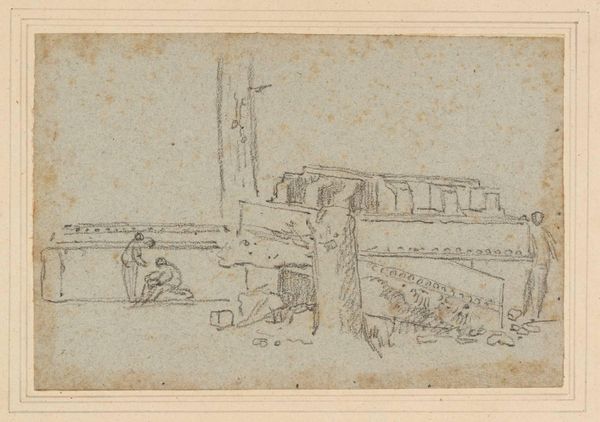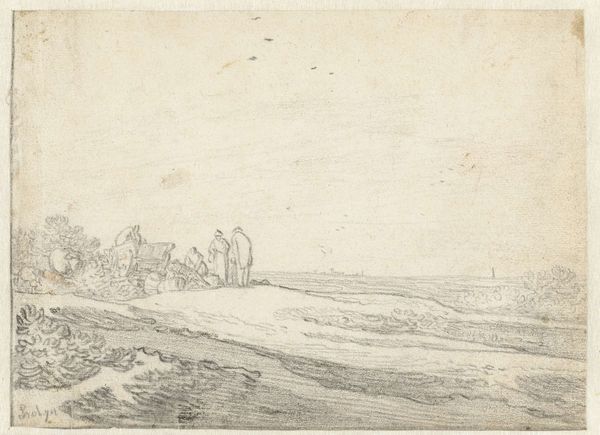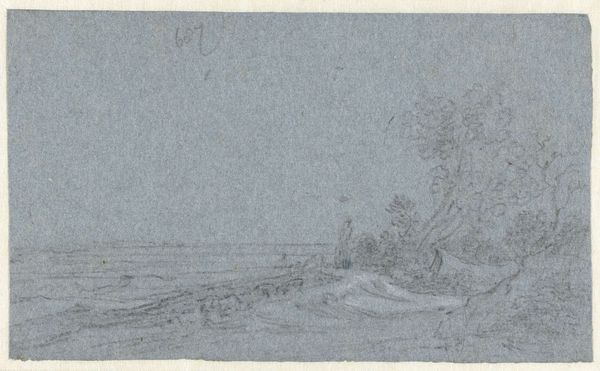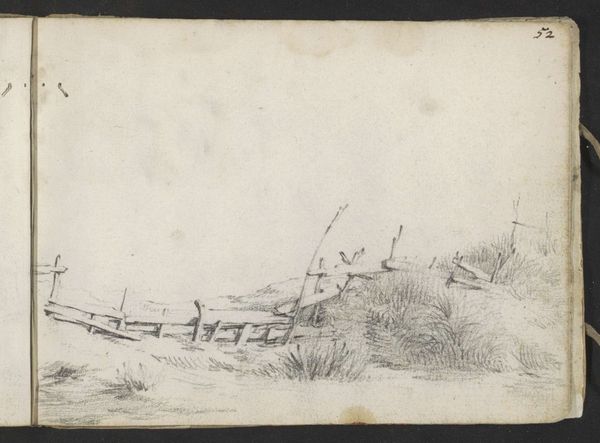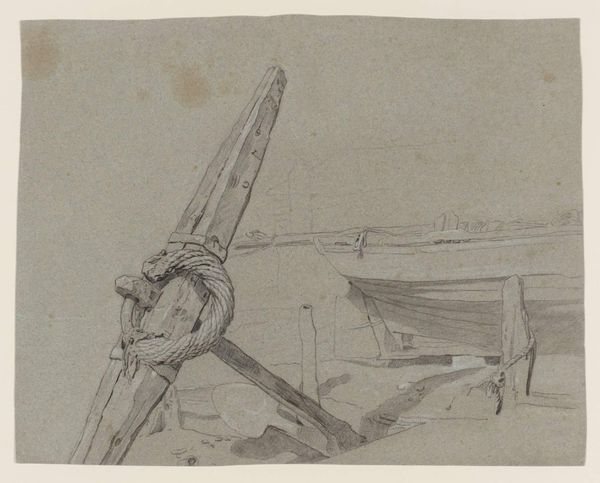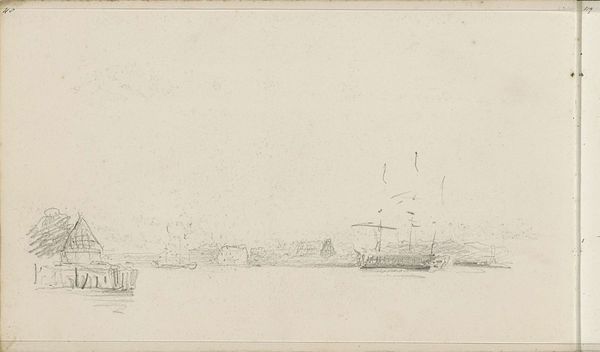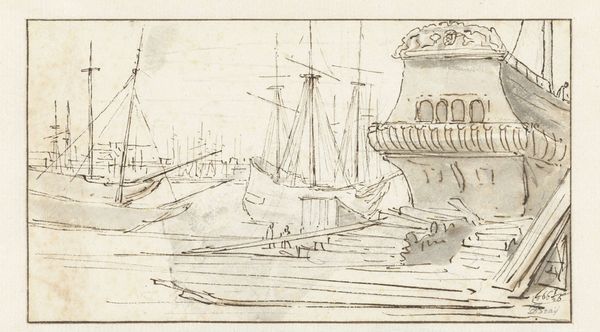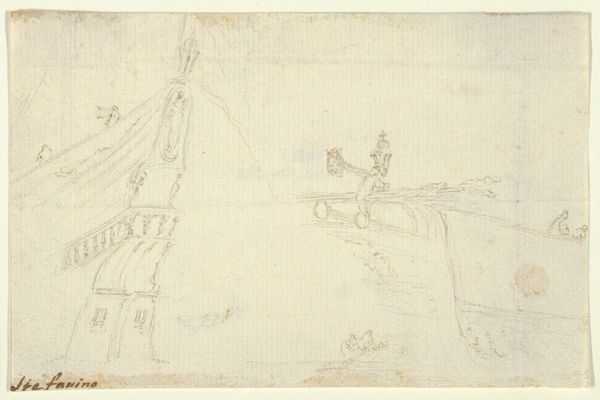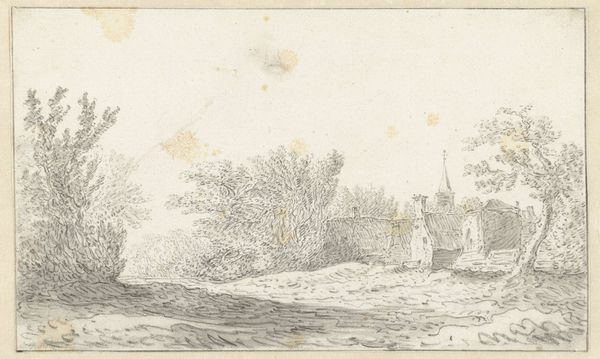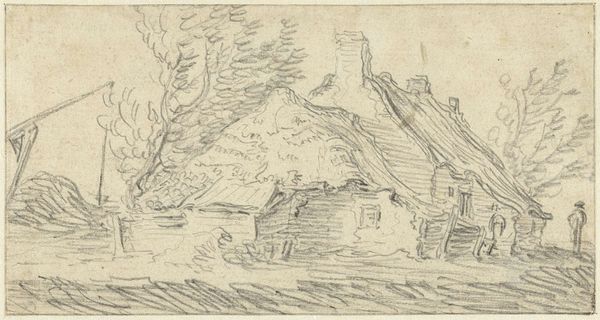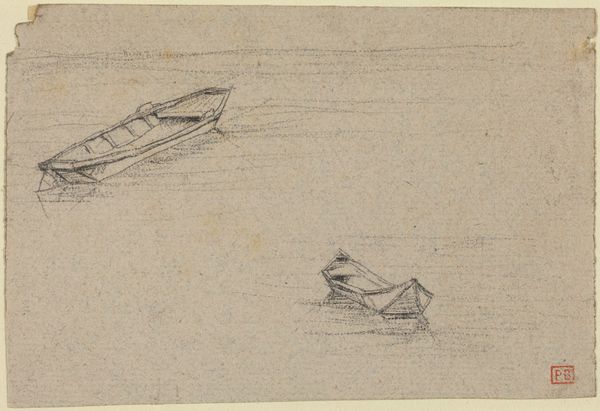
drawing, pencil
#
drawing
#
dutch-golden-age
#
pencil sketch
#
landscape
#
etching
#
pencil
Dimensions: height 89 mm, width 205 mm
Copyright: Rijks Museum: Open Domain
Curator: Let's turn our attention to this understated pencil sketch. It’s called "Oude houten brug," or "Old Wooden Bridge," by Gerard ter Borch, created around 1633-1634. You can currently find it here at the Rijksmuseum. Editor: My first thought is that it’s incredibly fragile-looking. The bridge itself appears precarious, like it might crumble with the next footstep. There's something about the fine lines suggesting decay and the transient nature of material things. Curator: Absolutely, and it’s important to view this not just as a study of a bridge, but within the larger context of Dutch Golden Age art and its patrons. These landscapes often reflected the prosperity and expanding infrastructure of the Netherlands, celebrating human control over nature. But the use of pencil as a medium here feels… personal. Editor: I agree. I'm struck by how Ter Borch's hand is so evident in the creation of this bridge, using a raw, unassuming material. The texture of the pencil strokes themselves speak to the labor involved in representing this object of infrastructure, this wooden construction. It emphasizes how the built environment comes from resources extracted and shaped by human labor. Curator: Exactly! The social underpinnings of this seemingly simple landscape come through by examining its context. And it shows how integral that very bridge was, to the development of the rural or even urban environment in that society. Editor: What’s so interesting to me, looking at the methods that it looks as though maybe even a more refined style can often obscure where exactly did this piece come from. What are its raw elements? It's a useful exercise to expose or recognize the conditions of the means of production. Curator: Considering all of that, it is a quiet, poignant piece. Editor: I'm left thinking about how infrastructure always implicates human and environmental histories.
Comments
No comments
Be the first to comment and join the conversation on the ultimate creative platform.
